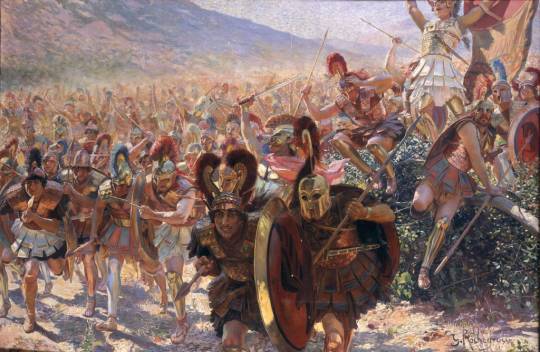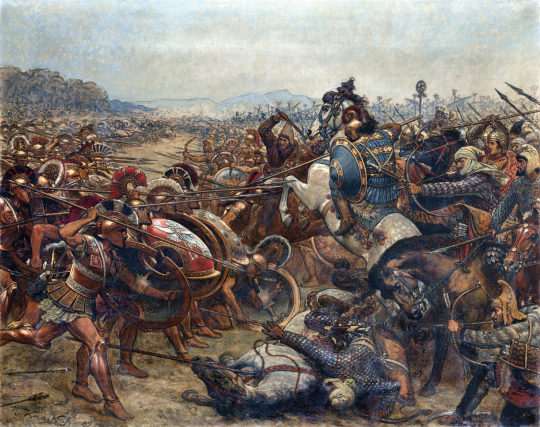#richard grenville
Text
There is such a thing as too much quartering in heraldry
Imagine rolling up to someone and his shield looks like this

#heraldry#quartering#Richard Temple-Nugent-Brydges-Chandos-Grenville#2nd Duke of Buckingham and Chandos
235 notes
·
View notes
Text

Georgina Grenville at Richard Tyler, Fall 1996
3 notes
·
View notes
Text

End of the Irish Invasion ; — or — the Destruction of the French Armada. James Gillray, 1797.
In this cartoon, Gillray depicts the failure of a French fleet commanded by Admiral Hoche and Theobald Wolfe Tone, which was meant to reach Ireland and help the United Irishmen take over, and eventually gain independence, but was held back by strong winds. According to an 1851 book on Gillray, "On the French expedition to Bantry Bay, at the end of 1796. Pitt, Dundas, Grenville, and Windham are the four winds which blow up the storm to destroy the invaders. Fox, as the carved figure at the head of the Revolution, is represented as influencing the United Irishmen. The crew of the jolly-boat are Sheridan, Liberty Hall, Erskine, M. A. Taylor, and Thelwall, who, it is insinuated, were all approvers, at least, of the Irish rebellion."
#THIS is what i was trying to post. god#james gillray#louis hoche#wolfe tone#richard sheridan#john thewall#charles fox#william pitt the younger#henry dundas#lord grenville#william windham#political history#political cartoon#1798 rebellion
4 notes
·
View notes
Text

HMS Victory, HMS Temeraire, HMS Neptune, 'Hold the Line', by Richard Grenville, (20th century)
149 notes
·
View notes
Text

George Grenville, Earl Temple, Mary, Countess Temple, and Their Son Richard painted by Joshua Reynolds (1723 - 1792)
58 notes
·
View notes
Photo


Battle of Marathon: The Helmet With the Soldier’s Skull Still Inside
This remarkable Corinthian-style helmet from the Battle of Marathon was reputedly found in 1834 with a human skull still inside.
It now forms part of the Royal Ontario Museum’s collections, but originally it was discovered by George Nugent-Grenville, who was the British High Commissioner of the Ionian Islands between 1832-35.
A keen antiquarian, Nugent-Grenville carried out a number of rudimentary archaeological excavations in Greece, one of which took place on the Plains of Marathon, where the helmet was uncovered.
A pivotal moment in Ancient Greek history, the battle of Marathon saw a smaller Greek force, mainly made up of Athenian troops, defeat an invading Persian army.
There were numerous casualties, and it appears that this helmet belonged to a Greek hoplite (soldier) who died during the fighting of the fierce and bloody battle.
The Athenian army under General Miltiades consisted almost entirely of hoplites in bronze armor, using primarily spears and large bronze shields. They fought in tight formations called phalanxes and literally slaughtered the lightly-clad Persian infantry in close combat.
The hoplite style of fighting would go on to epitomize ancient Greek warfare.
Today the helmet and associated skull can be viewed at the Royal Ontario Museum’s Gallery of Greece.



Battle of Marathon saved Western Civilization
It was in September of the year 490 BC when, just 42 kilometers (26 miles) outside of Athens, a vastly outnumbered army of brave soldiers saved their city from the invading Persian army in the Battle of Marathon.
But as the course of history shows, in the Battle of Marathon, they saved more than just their own city: they saved Athenian democracy itself, and consequently, protected the course of Western civilization.
According to historian Richard Billows and his well-researched book Marathon: How One Battle Changed Western Civilization, in one single day in 490 BC, the Athenian army under General Miltiades changed the course of civilization.
It is very unlikely that world civilization would be the same today if the Persians had defeated the Athenians at Marathon. The mighty army of Darius I would have conquered Athens and established Persian rule there, putting an end to the newborn Athenian democracy of Pericles.
In effect, this would certainly have destroyed the idea of democracy as it had developed in Athens at the time.
The Battle of Marathon lasted only two hours, ending with the Persian army breaking in panic toward their ships with the Athenians continuing to slay them as they fled.
In his book, however, Billows calls the Battle of Marathon a “miraculous victory” for the Greeks. The victory was not as easy as it is often portrayed by many historians. After all, the Persian army had never before been defeated.
By Tasos Kokkinidis.


#Battle of Marathon: The Helmet With the Soldier’s Skull Still Inside#greek helmet#persian army#general miltiades#king darius i#ancient artifacts#archeology#archeolgst#history#history news#ancient history#ancient culture#ancient civilizations#ancient greece#greek history#long reads
87 notes
·
View notes
Text
“ Nel 1585 Richard Grenville sbarcò in Virginia con sette navi e trovò indiani ospitali, ma quando uno di loro rubò una piccola coppa d’argento, rase al suolo l’intero villaggio. Dopodiché ebbe inizio la guerra con gli indiani! Quando i Padri Pellegrini arrivarono nella Nuova Inghilterra, quella terra era abitata da indigeni, ma il governatore del Massachusetts Bay Colony la definì “terra di nessuno”: gli “indiani” avevano solo il “diritto naturale”, non “civile” sulla terra. Da qui iniziò la guerra contro gli “indiani”, che finirà solo nel 1676, con la loro sconfitta.
Più tardi, per liberare i territori dagli Appalachi al Mississippi, perché fossero occupati dai bianchi, i coloni fecero ricorso al “trasferimento degli ‘indiani’” (Indian Removal Act), come fu eufemisticamente chiamato!
Questo rese disponibile un immenso territorio per la coltivazione del cotone al Sud e dei cereali al Nord, per l’immigrazione e per un’espansione, che raggiungerà ben presto l’Oceano Pacifico. E i popoli indigeni furono o massacrati o rinchiusi in “riserve” per turisti. Molti morirono anche per malattie importate dai bianchi.
I dieci milioni di “indiani” che vivevano a nord del Messico al momento dell'arrivo di Colombo si ridussero alla fine a meno di un milione. Si tratta di un altro genocidio perpetrato dalla tribù bianca! “Lo sbarco di Colombo nel Nuovo mondo ha significato,” afferma Zinn, “l’espulsione violenta degli indiani da ogni chilometro quadrato del continente, accompagnato da indicibili atrocità, finché non restò che ammassarli nelle riserve.” Un’icona degli indiani d’America è Leonard Peltier, uno dei leader storici dell'American Indian Movement (Aim), che marcisce in condizioni disumane in una prigione di massima sicurezza da quasi cinquant’anni, dal 1977. È un perseguitato politico, condannato all'esito di un processo segnato da plurime violazioni del diritto di difesa. Le più note personalità mondiali hanno chiesto e chiedono la sua liberazione.
Tutto ciò avvenne non solo in quello che oggi sono gli Usa, ma anche nel vicino Canada, a sua volta occupato da coloni inglesi.
In Canada fu messo in atto un vero e proprio “genocidio culturale” contro i popoli indigeni, un genocidio troppo a lungo negato.
“Uccidi l’indiano, salva l’uomo,” era il motto razzista adottato dalle scuole canadesi nelle quali i bambini indigeni subivano un azzeramento della loro cultura. Il 29 maggio 2021 sono stati rinvenuti, presso la scuola di Kamloops, i resti di duecentoquindici bambini nativi. Pochi giorni dopo, un altro orribile ritrovamento: i corpi di settecentocinquanta bambini sepolti attorno a una chiesa cattolica a Saskatchewan, nel Canada francese. Sono tanti gli investigatori che sospettano che ci siano molte migliaia di bambini sepolti segretamente per nascondere la vergogna del genocidio. Queste macabre scoperte aprono una brutta pagina del passato del Canada. Tra il 1863 e il 1998, centocinquantamila bambini nativi furono strappati alle loro famiglie dal governo canadese e collocati in scuole residenziali, per costringerli ad accettare la religione e la civiltà occidentali. Nelle centodiciotto scuole residenziali, settantanove erano cattoliche e dipendevano direttamente dal Vaticano. In queste scuole molti furono i casi di violenze, sterilizzazioni e stupri.
Come è potuto accadere tutto questo? Per capirlo bisogna risalire alla legislazione canadese. Il Federal Indian Act del 1874, tuttora in vigore, proclama l’inferiorità legale e morale dei popoli indigeni. E un altro decreto federale, il Gradual Civilization Act (1857), obbligava le famiglie dei nativi a firmare un documento che trasferiva alle scuole residenziali i diritti di tutela dei loro figli. Non possiamo dimenticare che il trasferimento legale dei diritti di tutela dei minori vuol dire che, in caso di morte, le scuole ne lucravano, appropriandosi delle loro terre.
Infine, nella British Columbia, un altro decreto del 1933, la Sterilization Law (tuttora in vigore), ha consentito sterilizzazioni di massa su interi gruppi di bambini indigeni. Amnesty International ha denunciato il fatto che molte donne indigene, che erano andate a partorire in ospedale, sono tornate a casa sterilizzate.
Siamo davanti a un vero e proprio genocidio culturale che ha portato all'eliminazione delle lingue degli indigeni, alla soppressione della loro cultura e spiritualità, e alla loro completa marginalizzazione a livello politico-economico.
Sono diventati stranieri nelle loro terre. “
Alex Zanotelli, Lettera alla tribù bianca, Feltrinelli (collana Serie Bianca); prima edizione marzo 2022. [Libro elettronico]
#Alex Zanotelli#letture#leggere#colonialismo#Columbus Day#Storia del colonialismo#Americhe#Usa#Canada#genocidio#Lettera alla tribù bianca#genocidi#etnocidio#etnocidi#saggi#Storia delle Americhe#Virginia#Regno Unito#Gran Bretagna#Padre Alessandro Zanotelli#saggistica#scritti saggistici#UK#colonialismo inglese#Massachusetts#Appalachi#Mississippi#nativi#Chiesa Cattolica#Protestantesimo
59 notes
·
View notes
Text
William Pitt's sleeping habits
I always found the private Pitt much more interesting than the political Pitt and probably one of the first aspects to really capture my attention about Pitt’s private life were his sleeping habits. I find sleep to be utterly fascinating, both from a medical/biological point of view but also from a personal point of view. And while Pitt’s sleep habits were nothing unheard of, there still were some peculiarities.
Pitt often was happy to get out of London, even if only for a short time, and to enjoy some peace and quiet in the country. Holwood House was a dearly beloved retreat of his. This desire to be out of the bustling city of London also extended to Pitt’s sleeping arrangements. William Wilberforce later wrote:
In the spring of one of these years Mr. Pitt, who was remarkably fond of sleeping in the country, and would often go out of town for that purpose as late as eleven or twelve o'clock at night, slept at Wimbledon for two or three months together. It was, I believe, rather at a later period that he often used to sleep also at Mr. Robert Smith’s house at Hamstead.
A. M. Wilberforce, editor, Private Papers of William Wilberforce, T. Fisher Unwin, London, 1897, p. 49.
Wimbledon was Wilberforce’s villa – he was one of the few of Pitt’s friends at the time to actually own a house.
But a country house was not the only place where Pitt could fall asleep, far from it. Although being Prime Minister is an important and dignified position, Pitt would often fall asleep in the House of Commons itself. Richard Rush, son of Benjamin Rush, American physician, and signer of the Declaration of Independence, was the American Minister to the court of St. James. In his papers he retells this story of a conversation he had once during a dinner:
He [William Wilberforce] spoke of Mr Pitt. They had been at school together. He was remarkable, he said, for excelling in mathematics; there was also this peculiarity in his constitution, that he required a great deal of sleep, seldom being able to do with less than ten or eleven hours; he would often drop asleep in the House of Commons; once he had known him do so at seven in the evening and sleep until day-light.
Richard Rush, Residence at the Court of London, third Edition, Hamilton, Adams & Co, London, 1872, p. 175
We can further read in the diaries of Charles Abbot:
March 17, 1796.—Dined at Butt’s with the Solicitor-General and Lord Muncaster. Lord Muncaster was an early political friend of Mr. Pitt, and our conversation turned much upon his habits of life. Pitt transacts the business of all departments except Lord Grenville’s and Dundas’s. He requires eight or ten hours’ sleep.
Earl Stanhope, The Life of the Right Honourable William Pitt, Vol. 3, John Murray, London, 1862, p. 4.
When you, for example read through Wilberforce’s diaries and journals, you will see many instances where he mentions that he either got no sleep at all or only slept very poorly. It was different with Pitt. When he was asleep, he normally could sleep on with neither internal nor external factors disturbing him. His ability to sleep on was apparently so outstanding that many of his contemporaries, Bishop Tomline and William Wilberforce for example, found it worthwhile to mention the few times that something disturbed Pitt’s sleep:
This was the only event of a public nature which I [Bishop Tomline] ever knew disturb Mr. Pitt’s rest while he continued in good health. Lord Temple’s resignation was determined upon at a late hour in the evening of the 21st, and when I went into Mr. Pitt’s bedroom the next morning he told me that he had not had a moment’s sleep.
Earl Stanhope, The Life of the Right Honourable William Pitt, Vol. 1, John Murray, London, 1861, p. 158.
The context of this scene was the resignation of Lord Temple as Secretary of State shortly after accepting the office. Pitt had really wanted Temple to be Secretary of State and was rather dismayed that he had resigned so quickly.
There were indeed but two events in the public life of Mr. Pitt, which were able to disturb his sleep—the mutiny at the Nore, and the first open opposition of Mr. Wilberforce; and he himself shared largely in these painful feelings.
R. I. Wilberforce, S. Wilberforce, The Life of William Wilberforce, Vol. 2, John Murray, London, 1833, p. 71.
Pitt himself told Lord Fitzharris that there was only one event that had kept him awake at night:
Lord Fitzharris says in his note-book:—‘‘One day in November, 1805, I happened to dine with Pitt, and Trafalgar was naturally the engrossing subject of our conversation. I shall never forget the eloquent manner in which he described his conflicting feelings when roused A the night to read Collingwood’s despatches. He observed that he had been called up at various hours in his eventful life by the arrival of news of various hues; but whether good or bad, he could always lay his head on his pillow and sink into sound, sleep again. On this occasion, however, the great event announced brought with it so much to weep over as well as to rejoice at, that he could not calm his thoughts; but at length got up, though it was three in the morning.”
Earl Stanhope, The Life of the Right Honourable William Pitt, Vol. 4, John Murray, London, 1862, p. 334.
The more you read about Pitt, especially in the private papers of his contemporaries and intimate friends, the more you see accounts of how often somebody mentions that he either roused him from his sleep him or found him to be still asleep/in bed. When Addington told Pitt that the Kings health was steadily mending – he was asleep. When the news of Trafalgar reached him – he was asleep. There is one letter from Admiral Nelson to Emma Hamilton. In it he describes that he had wanted to meet with William Pitt but when he arrived at his accommodation, he was told that Pitt was still asleep.
The older he got, the more sleep Pitt seemed to require and during his last illness, his ability to sleep was greatly impaired. Still, at the end of the day, his sleeping habits can be summed up by this quote from his niece Lady Hester Stanhope:
(…) for he was a good sleeper
Charles Lewis Meryon, Memoirs of the Lady Hester Stanhope, As related by Herself in Conversations with her Physician, Volume 2, Second Edition, London, 1845, p.58.
#william pitt#william pitt the younger#william wilberforce#sleep#lady hester stanhope#charles lewis meryon#bishop tomline#richard rush#english history#benjamin rush#lord temple#lord fitzharris#charles abbot#earl stanhope#admiral nelson#henry addington
18 notes
·
View notes
Text



















The Citadel - BBC One - January 20, 1983 - March 24, 1983 / PBS - November, 1983 - January 1984 (Masterpiece Theatre)
Drama (10 Episodes)
Running Time: 60 minutes
Stars:
Ben Cross as Dr. Andrew Manson
David Gwillim as David Hope
Clare Higgins as Christine Barlow / Manson
Tenniel Evans as Dr. Page
Gareth Thomas as Dr. Philip Denny
Michael Cochrane as Freddie Hamson
Cynthia Grenville as Blodwen Page
Colin Baker as Richard Vaughan
Jane How as Mrs. Vaughan
Tim Wylton as Ben Chenkin
Don Fellows as Richard Stillman
Beryl Nesbitt as Annie Hughes
John Nettleton as Charles Ivory
Raymond Bowers as Dr. Llewellyn
Dilys Price as Mrs. Llewellyn
David Pugh as Joe Morgan
Dyfed Thomas as Dai Jenkins
Jack Walters as Old Thomas
Richard Davies as Dr. Watkins
Janet Davies as Mrs. Watkins
Carmen du Sautoy as Frances Lawrence
Avril Elgar as Nurse Sharp
Oliver Ford Davies as Reverend Parry
Michael Gough as Sir Jenner Halliday
Charles Kay as Mr. Hopper
Buster Merryfield as Professor Challis
John Welsh as Sir Robert Abbey
#The Citadel#TV#BBC One#Drama#1983#1980's#Ben Cross#David Gwillim#Clare Higgins#Tenniel Evans#Gareth Thomas#Michael Cochrane
3 notes
·
View notes
Text

Perhaps Sherborne’s most famous former resident, Sir Walter Raleigh (c. 1554 – October, 29, 1618), was an English gentleman, writer, poet, soldier, politician, courtier, spy and explorer.
Cousin to Sir Richard Grenville and younger half-brother of Sir Humphrey Gilbert, Raleigh is famed as being the man who first brought potatoes and tobacco to England. He rose rapidly in the favour of Queen Elizabeth I and was knighted in 1585, and was instrumental in the English colonisation of North America.
Sherborne has two castles, ’Sherborne (old) Castle’ (which dates back to the twelfth century, but now stands in ruins), and ’Sherborne Lodge’ (which was built by Sir Walter Raleigh and completed in 1594); though it’s since been extended and is known today as ’Sherborne (new) Castle’ – or simply, Sherborne Castle.
It was at Sherborne Castle that Raleigh was reportedly doused with a bucket of water after a servant saw clouds of smoke coming from his pipe (a sight unseen in England before Raleigh’s introduction of tobacco), in the belief he’d been set alight; though the same story is also told of other places associated with Raleigh, including his house in Ireland, the Virginia Ash Inn in Henstridge near Sherborne, and South Wraxall Manor in Wiltshire, home of Raleigh’s friend Sir Walter Long.
Having fallen from favour with the Queen, Raleigh retired to his estate at Sherborne; though he was later executed by King James I.
12 notes
·
View notes
Text
Every book/movie/show Sara Quin has recommended.
and some reviews at the bottom, not the ones on skq reads
Books
Abandon Me by Melissa Febos
After the Tall Timber: Collected Nonfiction by Reneta Adler
Against Everything by Mark Grief
A Gate at the Stairs by Lorrie Moore
Air Guitar: Essays on Art & Democracy by Dave Hickey
Amazing Adventures of Kavalier & and Clay by Michael Chaboan
A Lover’s Discourse by Roland Barthes
A Moveable Feast by Ernest Hemingway
A Natural History of the Senses by Diane Ackerman
*An Education by Susan Choi
*Anything That Moves, Dana Goodyear
*Are You My Mother? By Alison Bechdel
*Artful by Ali Smith
*A Sport and a Pastime by James Salter
Asymmetry by Lisa Halliday
Asterios Polyp by David Mazzucchelli
Atmospheric Disturbances by Rivka Galchen
A Visit from the Goon Squad by Jennifer Egan
*A Widow for One Year by John Irving
A Zine Yearbook by Jason Kucsma
Barbarian Days Surfing Life by William Finegan
Bark by Lorrie Moore
Barney’s Version by Mortecai Richler
Behind The Beautiful Forevers: Life, Death, and Hope in a Mumbai Undercity by Katherine Boo
Berlin Stories by Robert Walser
Borne by Jeff VadnerMeer
Bossy Pants by Tina Fey
Blood Horses by John Jeremiah Sullivan
By Blood by Ellen Ullman
By Grand Central Station by Elizabeth Smart
Call Me By Your Name by Andre Aciman
Can’t and Won’t by Lydia Davis
Cats & Plants by Stephen Eichhorn
Changed my Mind by Zadie Smith
Cleopathra: A Life by Stacy Schiff
Colour by Icons by Never Apart
*Conversations With Friends by Sally Rooney
Death & Co by Alex Day and more
Dept. of Speculation by Jenny Offill
Diary of a Bad Year by J.M Coetzee
Don’t Get Too Comfortable by David Rakoff
Do What You Want by Ruby Tandoh
Dykes to Watch Out For by Alison Bechel
Einstein’s Dreams by Alan Lightman
Empire Of Illusion by Chris Hedges
Empty Nest
End of Eddy by Edouard Louis
Epilectic by David Beauchard
Essays Against Everything by Mark Grief
Essex County by Jeff Lemire
Everything Ravaged, Everything Burned by Wells Tower
*Far From the Tree by Andrew Solomon
Farther Away: Essays by Jonathan Franzen
Fear of Music by Jonathan Lethem
Feeding My Mother by Jane Arden
Fifteen Dogs by Andre Alexis
*Flutter by Jennie Wood
Forty One False Starts by Janet Malcolms
Forgive Me if I’ve Told You This Before by Karelia Stetz Waters
Fosse by Sam Wasson
Fraud Essays by David Rakoff
Fun Home: A Family Tragicomic by Alison Bechel
Getting A Life: Stories by Helen Simpson
Girls in the Moon by Janet McNally
Go Ask Alice by Beatrice Sparks
*Gone Girl by Gillian Flynn
Groomed by Jess Rona
*Habibi by Craig Thompson
Half Empty by David Rake
Helter Skelter by Curt Gentry and Vincent Bugliosi
Her Body And Other Parties by Carmen Machado
Here Comes the Sun by Nicole Dennis Benn
Her Majesty Queen Elizabeth the II by Christopher Warwick
*H is For Hawk by Helen Macdonald
*Hotel New Hampshire by John Irving
Hunger Games by Suzanne Collins
I Am a Camera by John Van Druten
I Love Dick by Chris Kraus
Important Artifacts and Personal Property from the Collection of Lenore Doolan and Harold Morries, Including Books, Street Fashion, and Jewelry by Leanne Shapton
*Independence Day by Richard Ford
Independent people by Halldor Laxness
Intimacy by Jean-Paul-Satre
I Pass Like Night by Jonathan Ames
I Want To Show You More by Jamie Quatro
Jamilti and Other Stories by Rutu Modan
Juliet Takes a Breath by Gabby Rivera
*Kramers Ergot by Sammy Harkham
Krazy! By Bruce Grenville
Leaving the Atocha Station by Ben Lerner
*Let’s Explore Diabetes With Owls- David Sedaris
Let the Great World Spin by Colum McCann
*Light Years by James Salter
Likewise by Ariel Shrag
Little Fires Everywhere by Celeste Ng
Love Dishonor Marry Die Cherish Perish by David Rakoff
Love In Infant Monkeys by Lydia Millet
Making Nice by Matt Sumell
Margaret Fuller: A New American Life by Megan Marshall
May We Be Forgiven by A.M Homes
Mean by Myriam Gurba
Me before You by Jojo Moyes
Monkey Grip by Helen Garner
Mother of All Questions by Rebecca Solnit
Music for Torching by A.M Homes
*My Education by Susan Choi
My Father’s Tears and Other Stories by John Updike
My Lifte in France, Julia Child and Alex Prud’homme
My Misspent Youth by Meghan Daum
Mourning Diary by Roland Barthes
My Struggle by Karl One Knausgaard
My Struggle 2 by Karl One Knausgaard
Mythologies by Roland Barthes
Nasty Woman by Heather McDaid
Netherland by Joseph O’Neill
Nightfilm by Marisha Pessl
Nobody Is Ever Missing by Catherine Lacey
No Straight Lines: Four Decades of Queer Comics by Justin Hall
Notes on a Foreign Country by Suzy Hansen
Nothing to be Frightened of by Julien Barnes
On Boxing by Joyce Carol Oates
Open City by Teju Cole
Opposite of Hate by Sally Kohn
*Paper Lantern: Love Stories by Stuart Dybek
Pauline Kael: A Life In The Dark by Brian Kellow
Paying For It by Chester Brown
*Pirates and Farmers by Dave Hickey
*Pitch Dark by Renata Alder
Political Fictions by Joan Didion
Polyamorous Love Song by Jacob Wren
Priestdaddy by Patricia Lockwood
*Provence 1970 by Luke Barr
Pulphead-Essays by John Jeremiah Sullivan
*Random Family by Adrian NicoleLeBlanc
Senselessness by Horacio Castellanos Moya
She believed she could so she did by Julie ‘Hesta Prynn’ Slavin
She of the Mountains by Vivek Shraya
Somebody with a Little Hammer by Mary Gaitskill
Speedboat by Renata Adler
Special Exits by Joyce Farmer
State of Wonder by Ann Patchet
Stoner by John Williams
Summertime by J.M Coetzee
Sweet Tooth by Jeff Lemire
Swing Time by Zadie Smith
**Tenth of December by George Saunders
That Summer Time Sound- Matthew Specktor (sara narrates a part in the audio version)
The Art of Fielding by Chad Harbach
The Association of Small Bombs by Karan Mahajan
The Best American Comics 2007 by Charles Burns
The Best American Nonrequired Reading 2009 by David Eggers
The Cement Garden by Ian McEwan
The Children of Palomar by Gilbert Hernandez
The City and the Pillar by Gore Vidal
The Birth House by Ami McKay
The Book of Laughter and Forgetting by Milan Kundera
The Dark Room by Susan Faludi
*The Days of Abandonment by Elena Ferrante
The Disappointment Artist by Jonathan Lethem
The Doors Of Perception and Heaven and Hell by Aldous Huxley
The Ecstasy of Influence: Nonfictions by Jonathan Lethem
The End of The Story by Lydia Davis
The Essential Elle Willis by Ellen Willis
The Fight by Norman Mailer
*The Flamethrowers by Rachel Kushner
The Folded Clock by Heidi Julavits
The Forgotten Waltz by Anne Enright
The Goldfinch by Donna Tartt
*The Guest Cat by Takashi Hiraide
The Hunger Games by Suzanne Collins
The Idiot by Elif Batumam
The Informed Air by Muriel Spark
The Innovator’s Dilemma: When New Technologies Cause Great Firms to Fail by Clayton M. Christensen
The Interestings by Meg Wolitzer
*The Invention of Solitude by Paul Auster
The Irresponsible Self by James Woods
The Journalist and the Murderer by Janet Malcom
**The Last Word: Reviving the Dying Art of Eulogy by Julia Cooper
The Little Red Chairs by by Edna O’Brien
The Man Without Qualities by Robert Musil
The Marriage Plot by Jeffrey Eugenides
The Missing Piece by Shel Silverstein
The Missing Piece Meets The Big O by Shel Silverstein
The Moronic Inferno by Martin Amis
The Mother of All Questions by Rebecca Solnit
The Neopolitan Novels by Elena Ferrante
The Nobody by Jeff Lemire
The Noonday Demon: An Atlas of Depression by Andrew Solomon
The People in the Trees- Hanya Yanagihara
The Notebooks of Malte Laurid’s Brigge by Rainer Maria Rilke
The Price of Salt by Patricia Highsmith
The Property by Rutu Modan
The Remains of the Day by Kazuo Ishiguro
The Road by Cormac McCarthy
The Rules Do Not Apply by Ariel Levy
This life by Martin hagglund
The Sense Of An Ending by Julian Barnes
The Slow Man by J.M Coetzee
The Spirit catches you and you fall down by Anne Fadiman
The Sun Also Rises by Ernest Hemingway
The Topeka School by Ben Lerner65
The War Against Cliche by Martin Amis
The Yiddish Policemen’s Union by Michael Chabon
Things Are What You Make Of Them by Adam J. Kurtz
Thinking, Fast And Slow’ by Daniel Kahneman
*This is How You Lose Her by Junot Diaz
Those Who Leave and Those Who Stay by Elena Ferrante
To my Trans Sisters by Charlie Croggs
Tranny by Laura Jane Grace
True Stories by Helen Garner
Two Lives: Gertrude and Alice by Janet Malcolm
Unless by Carol Shields
Versed by Rae Armantrout
Visiting Mrs. Nabokov by Martin Amis
Vitamin PH: New Perspectives in Photography by Rodrigo Alonso
Waiting for the Barbarians by J.M Coetzee
WACK! Art and The Feminist Revolution by Cornelia Butler
*Wake In Fright by Kenneth Cook
Wanderlust A History of Walking by Rebecca Saint
Ways of Seeing by John Berger
*We Are All Completely Besides Ourselves by Karen Joy Fowler
Whatever happened to Interracial Love by Kathleen Colleens
What Happened by Hillary Rodham Clinton
What I Talk About When I Talk About Running by Haruki Murakami
When Things Go Missing by Kathryn Schulz
*White Girls by Hilton Als
Winter by Ali Smith
Women by Charles Bukowski
(Woman) Writer: by Joyce Carol Oates
Works of Love by Søren Kierkegaard
1Q84 by Haruki Murakami
*100 Essays I don’t Have Time To Write by Sarah Ruhl
-Any works written by Renata Adler, Edward Albee, Roland Barthes, Alison Bechel, Beverly Cleary, J.M Coetzee, Susan Faludi, David Hickey, Elena Ferrante, Stephen King, John Irving, Jeff Lemire, and Lorrie Moore, and David Rakoff, Anne Rice, Donna Tartt, and John Updike
Magazines
Harper’s
Lapham’s Quarterly
Rolling Stones
SPIN
The Believer (August 2003, September 2004, November 2004, October 2008, November/December 2008, March/April 2009, June 2009)
The New Yorker
Bookstores
Drawn and Quarterly in Montreal
Sam Wellers Zion in salt lake LA
Strand Books
Housingworks
Mcleods in Vancouver
Powells
Sara wrote something short in ‘do what you want’ by ruby tandoh
also wrote the preface to jess rona’s book
Movies, Documentaries, Shows, Podcasts etc
Adventures in Babysitting
Arrested Development
*Bachelorette
Beauty is EmbarrassingBlack Power Mix Tape
*Bojack Horsemen (same artist as the Hang On music video)Broadchurch
Brothers and Sisters
Brown Girls
Bugsy Malone
Call me By Your Name
Luca Guadagnino
Cameraperson by Kirsten Johnson
*Charlie Rose
*ChungKing Express
*Dan Savage Lovecast
***DeadWood
Drinking Buddies
Fresh Air with Terry Gross
Friday Night Lights
Full House
Game of Thrones
GarfieldGolden Girls Goonies
*Holy Motors
Home ImprovementI
nside Out
In The Loop
Lake
Legion
Little Shop of Horrors
L.O.V.E (tv series)
Madmen
Milk 2008
Moonlight
Nashville
Neon Bull
Orange Is The New BlackPhantom of The Paradise Rocky Horror Picture Show Sense8ShamelessShort Cut because 1992 Julianne Moore
Simon Killer
Sopranos Talk
RadioSpeed the Plow by David Mamet
Still Processing
Terminator 2
Terry Gross Fresh air NPR
The Bridge
The Crown
The Fall
The Fugitive
The Leftovers
The Minipops
The Thick of It
The Office (UK)
The Property Brothers
The Real Housewives of (anywhere)
The Wire
*This American Life
Tom Petty- Running Down A Dream
Trueblood
WALL-E
War of the Worlds
War Witch
Weiner-Dog
West Wing
2Dope Queens
13 Monkeys
30 Rock
and here’s some more book reviews from Sara
Outline
by Rachel Cusk
The truth is that I struggled to pick my favorite book or writing from Rachel Cusk. All three novels in her
Outline series
are fantastic, and I’ve reread each of them first with passion and then again with a studious eye. For me there is the lonely, yet pragmatic, keen observational protagonist that appeals to me deeply. But also, a woman traveling, forever on the receiving end of looping conversation with strangers. I find her writing extremely romantic. What I’d most like to include on this list, is a piece of her writing from the
New York Times Magazine
: "Making House: Notes on Domesticity." It is a perfect piece of writing about the struggle of making a home and living it in comfortably. “Like the body itself, a home is something both looked at and lived in, a duality that in neither case I have managed to reconcile. I retain the belief that other people’s homes are real where mine is a fabrication, just as I imagine others to live inner lives less flawed than my own.
”
Fire Sermon
by Jamie Quatro
Jamie Quatro’s novel about devotion, longing, lust and god was impossible to put down. I read it in one giant gulp. While male writers are given ample opportunity to write about these ideas, it still feels rare and thrilling when women do.
Sing, Unburied, Sing
by Jesmyn Ward
Everything Jesmyn Ward has written has haunted me afterward. Unblinking, brutal, heartbreaking stories. Her writing feels both modern and like something from a masterpiece that every student is meant to read in high school or college.
The Topeka School
by Ben Lerner
I love a hook, a melody that on first listen gives you goosebumps, or makes your stomach lurch up to your throat. Sometimes I hear one and I think, “that is a smash,” and then settle in to envy that I didn’t write the song myself. That was the feeling I had reading
I couldn’t help but compare our memoir because both books center adolescence and high school at their core. While Ben writes dazzlingly about masculinity and violence and the bubbling rage of teenage boys, I thought about the way we wrote about the paralysis and fear of being a queer girl in that same kind of world. While his boys turn their rage outward, we focused our violence inward, on the most tender parts of ourselves. Ben’s writing opens a door to understanding something about my own experience of those adolescent years. He sheds light on the parents and teachers whose complicated lives indelibly haunt our own, in ways we don’t realize until we become adults. It seems much of our public conversation revolves around what to do about and with men,
The Topeka School is a thrilling response. All of that to say, I think Ben’s book is a smash.
JUNE 3, 2009
1. The Flamethrowers by Rachel KushnerI was so captivated there was no choice but to finish it entirely in one long stretch of days. Passages so beautiful that I found myself re-reading them over and over again in amazement. I think it was in the Harpers Magazine review that they called it feminist and sexy. It’s true. An entirely fresh and inspiring heroine.
2. Light Years by James SalterSo many tears; on the tarmac, on the subway, tucked in my bus bunk. I will cherish this book forever. It is 40 years old and that made the discovery so much more powerful. It’s also a good reminder that I am sentimental and a romantic no matter how hard I try to resist those urges. I’ll cozy up with my tears any day, you can’t shame me!
3. Tenth of December by George SaundersThere aren’t very many writers with a body of work I love so completely. But, I think this is my absolute favourite. I have total admiration/awe for a mind this strange and wonderful
#tegan wrote a song for this book called Wolf at the Table by Augusten Burroughs#it sounds like it could be in the con#you can search it on youtube it's there#there's some * asteriks cause she spoke mo#more about those#or liked them more#Sara Quin#tegan and sara#i'm sorry if i'm spamming tns tags with so much text i only have like 5 posts to make i swear#i've had this shit in my notes for like literally 10 years#from like#and stuff from their insta story or other things#interviews#SKQREADS#arrested development and the crown are both so good#and Moonlight
23 notes
·
View notes
Text

Rating: Explicit
Warnings: Rape/Non-Con
Category: M/M
Fandom: Detroit: Become Human (Video Game)
Pairings: Upgraded Connor | RK900/Gavin Reed
Tags: RK900 is a human, RK900's name is Nathan, Implied/Referenced Rape/Non-con, referenced anal sex, referenced previous convin, Connor is also human, Hank is an android, Post-Pacifist Best Ending (Detroit: Become Human), Alternate Universe, Hurt/Comfort, Angst, Whump, Masturbation, reverse au sort of, Blow Jobs, Flashbacks, Light Bondage, referenced impact play, Substance Abuse, Alcohol, Anxiety, Trauma, Angst with a Happy Ending, Slow Burn, Id Fic, Suicidal Thoughts, Suicidal Ideation, Dubious Consent, Therapy, Self-Harm, magic healing cock sort of, Hand Jobs, Self-Hatred, Cuddling & Snuggling, Anal Sex, Anal Fingering, Boys Kissing, Smut, Praise Kink, Top Upgraded Connor | RK900, Bottom Gavin Reed, Minor Character Death, Grief/Mourning
Summary: Three months ago, Gavin handed over evidence of corruption by his previous Captain, Richard Perkins, and many of his coworkers at Broadbank Precinct, for which he earned a job at Grenville Precinct under Captain Jeffrey Fowler. After a train of bad decisions and lost friends and his usual haunts, Gavin's lonely, but randomly runs into Connor's look-alike, Nathan, who also mistakes Gavin for someone he's not.
...Right?
In Your Place, Chapter 12: Drive (51,647 words, complete)
Final chapter!
#Reed900#Gavin900#Detroit: Become Human#Detective Gavin Reed#RK900#final chapter#at long last#G9#m/m
3 notes
·
View notes
Text

Georgina Grenville at Richard Tyler, Fall 1996
2 notes
·
View notes
Text
Just finished Prince Regent, my review is:
Casting for Fox and Grenville was perfect
Casting for Liverpool was not
Sheridan's arc was so sad :(
Why did they skip over Perceval being shot I wanted to see it
Obsessed with the fact that future prime minister George Canning's only role was as Caroline's boytoy. portrayal of him of all time
WHERE WAS CASTLEREAGH WHERE WAS CASTLEREAGH WHERE WAS CASTLEREAGH WHERE WAS CASTLEREAGH WH
#prince regent#charles fox#lord grenville#lord liverpool#richard sheridan#george canning#george iv#lord castlereagh#political history
3 notes
·
View notes
Photo

H.M.S. Royal Sovereign breaks through the combined fleet of the Spanish and French at the battle of Trafalgar 21st of October 1805, by Richard Grenville
180 notes
·
View notes
Photo

Lanhydrock House and Gardens, Cornwall by photphobia The great house stands in extensive grounds (360 hectares or 890 acres) above the River Fowey and it has been owned and managed by the National Trust since 1953. Much of the present house dates back to Victorian times but some sections date from the 1620s. It is a Grade I listed building and is set in gardens with formal areas. The hill behind the house is planted with a fine selection of shrubs and trees. Lanhydrock estate belonged to the Augustinian priory of St Petroc at Bodmin but the Dissolution of the Monasteries during the 1530s saw it pass into private hands. In 1620 wealthy merchant Sir Richard Robartes, of Truro, acquired the estate and began building Lanhydrock House, designed to a four-sided layout around a central courtyard and constructed of grey granite. Robartes died in 1624 but work on the building was continued by his son John Robartes, 1st Earl of Radnor, a notable public figure who served as Lord Privy Seal and Lord President of the Council. The embattled walls were built of rude (rough), massive granite blocks with years 1636 and 1642 on the walls, indicating when they were built. A barbican gate was added and the house was garrisoned by Parliamentary forces in August 1644 when Sir Richard Grenville took possession. Lanhydrock is a civil parish centred on a country estate and mansion in Cornwall, United Kingdom. The parish lies south of the town of Bodmin and is bounded to the north by Bodmin parish, to the south by Lanlivery parish and to the west by Lanivet parish. The parish church is dedicated to St Hydroc and stands in the grounds of Lanhydrock House. Parts date back to the late 15th century and the church has a chancel, nave, north and south aisles and three-stage battlemented tower with nine bells. Eight bells date from the late 19th century and are regularly rung. The ninth bell dates from circa 1599 and is only rung infrequently for tolling. https://flic.kr/p/2cDqiCp
2 notes
·
View notes